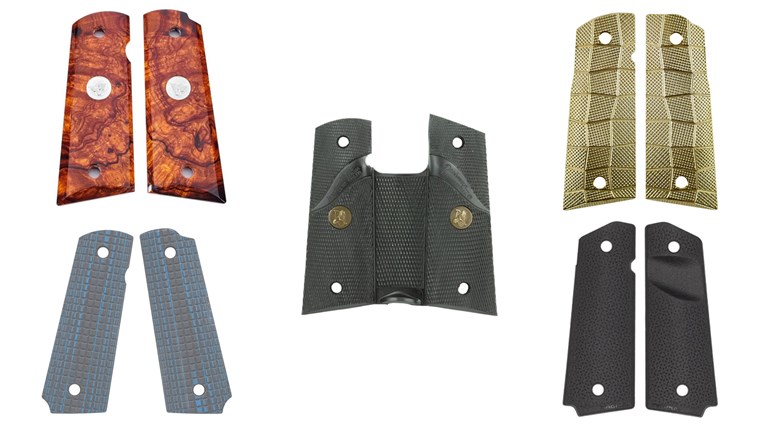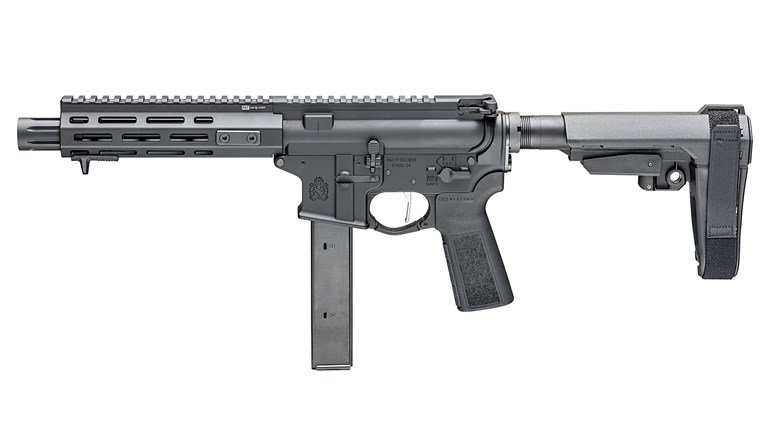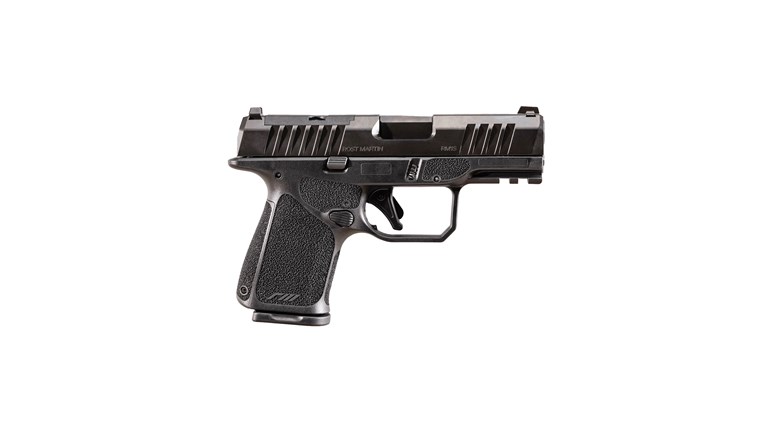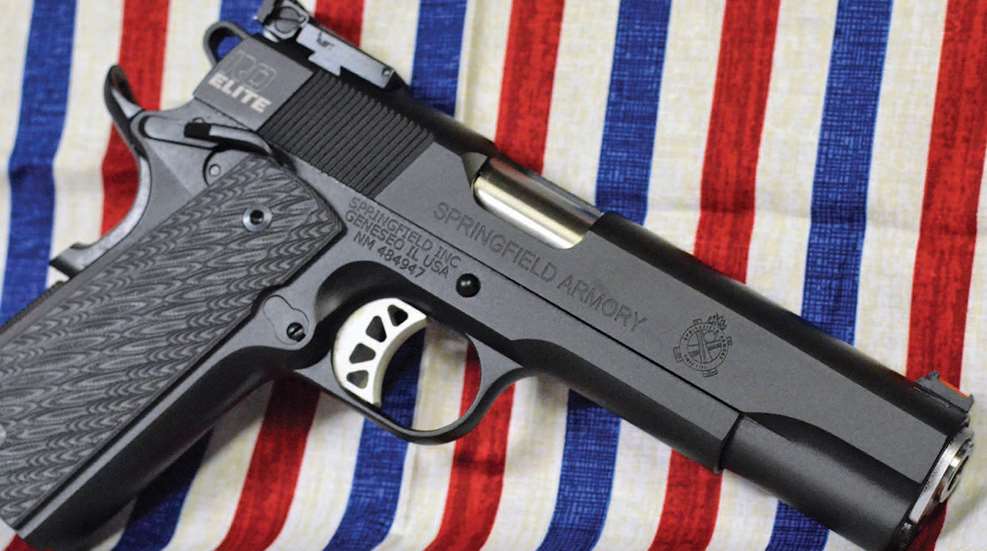
Recently, we received a pair of Springfield Armory RO Elites here at Parabellum, one chambered in .45 ACP ($1,048) and the other in 9mm ($1,061). They are fine-looking guns, blued steel with dark gray grips. The chrome-colored barrel which is visible through the ejection port, the aluminum trigger and the barrel bushing contrast the blue gun for a very nice presentation. However, these pistols are not flashy; the 1911 has been around for more than a century and the modern renditions such as these RO Elites are rock-solid workhorses. Our task this time around was to review a model of pistol that is familiar, popular and has a major amount of history behind it. As I write this review, a number of 1911’s reside in the gun safe just a few feet away—and I suspect this is true of many readers so this review should be right in the wheelhouse.
The Gun
The RO Elite was built specifically for the competition crowd. The idea was to be match ready “right out of the box.” Ready out of the box is a mantra that many claim and few deliver. Will these Springfields deliver right out of the box? Where will these RO Elites rank with the field of competition 1911s?
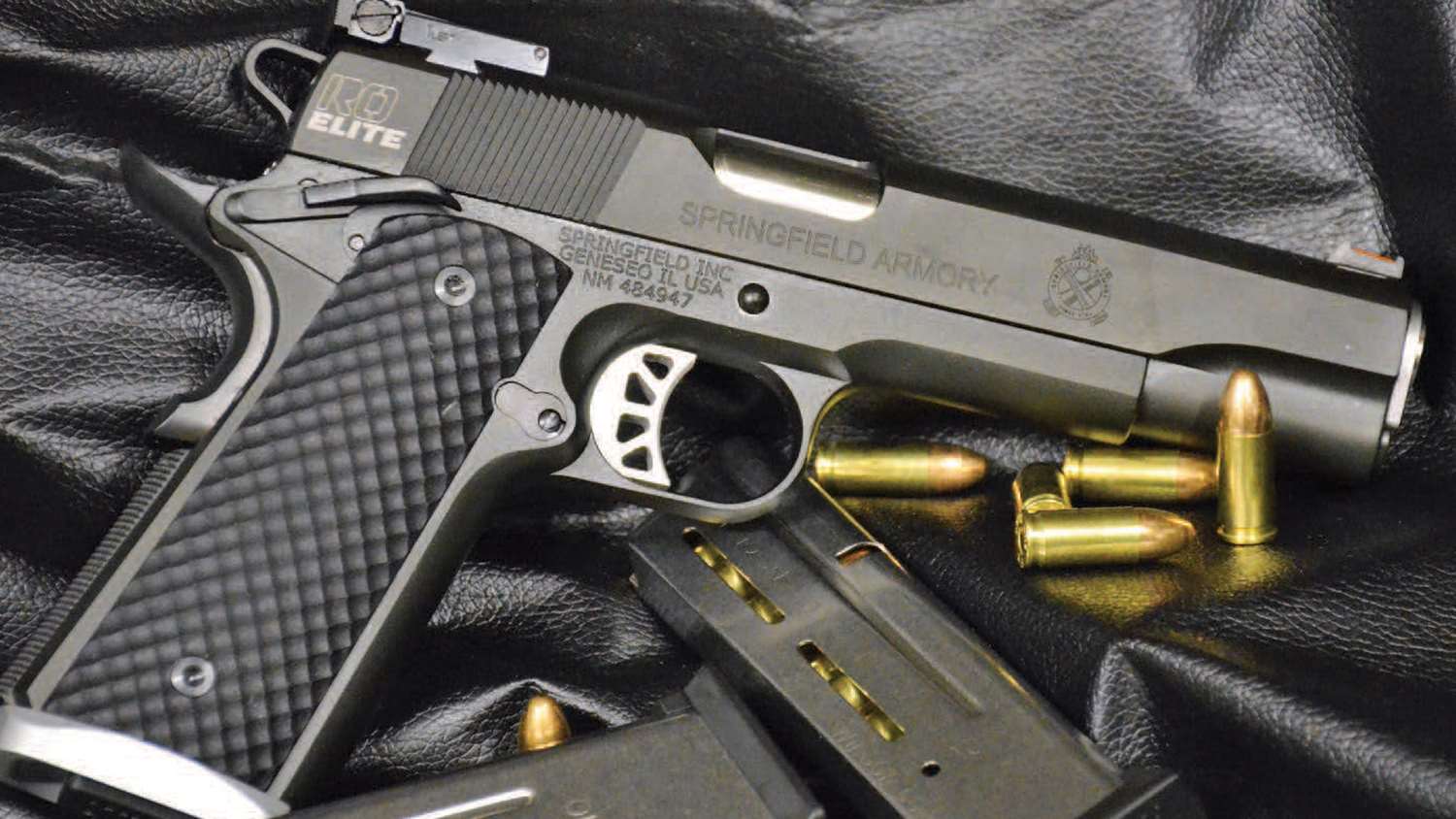
It is well worth mentioning the gear that arrives with each RO Elite. The package is contained in a white cardboard box with a handle, and inside is a range bag with a handle. Inside the bag is the pistol, holster, four magazines, a double magazine pouch, cleaning brush and the politically correct, mandated gun lock. The range bag has enough room to spare to allow for some ammo for a range trip. The serious competitor is not going to head out to a match with the gear included in this kit, but it will get the entry level competitor through the first part of their competition experience until they know what gear to acquire. For example, the holster is sub-optimal for competition but it would do in a pinch, such as when you leave your regular holster at home. Those new to competition always struggle to get geared up early on in their competitive efforts. This kit will help the new competitor get safely into a match with some one-stop shopping. What a great idea!
The RO Elite is a 1911 with smoothed up edges. The rear sight is adjustable for windage and elevation, which is necessary for a serious competition pistol. The front sight is of the fiber-optic variety, which is also essential in the mind of USPSA competitors. Over the years, many pistols have claimed to be competition-ready, despite coming with fixed sights; the RO Elite comes excellently equipped in the sights department. The hammer and trigger are skeletonized, which probably make very little if any difference in the world of physics or performance, but many people are convinced it matters. The trigger is curved in a comfortable fashion. The hammer and trigger both look modern and cool. There is a full beavertail to avoid hammer bite, which is more than a matter of cosmetics and marketing. The lack of a full beavertail on the original 1911 proves that John Browning was human—hammer bite sucks, and the RO Elite has that handled.
The grip safety has an enhanced or raised back to make it easier to disengage the grip safety with a proper firing grip. The RO Elite also comes with an ambidextrous thumb safety; with the number of classifiers and standards stages that call for weak hand shooting, the ambidextrous safety is an essential. It is refreshing that Springfield is among the few 1911 manufacturers that recognize this fact. The safety is smoothed, slimmed and rounded so as to not dig into the thumbs while firing with a high grip on the gun. This attention to detail is much appreciated.
The RO Elite is comfortable in the hand. The magazine release is standard size, but textured for positive contact at speed. The factory grips are also textured to enhance the firing grip. There is a groove in the grip to allow a thumb to hit the magazine release easily and reliably. A good two-hand firing grip is not going to drop magazines accidentally, but the magazine release can be hit at speed. The live fire testing of the guns proved this.
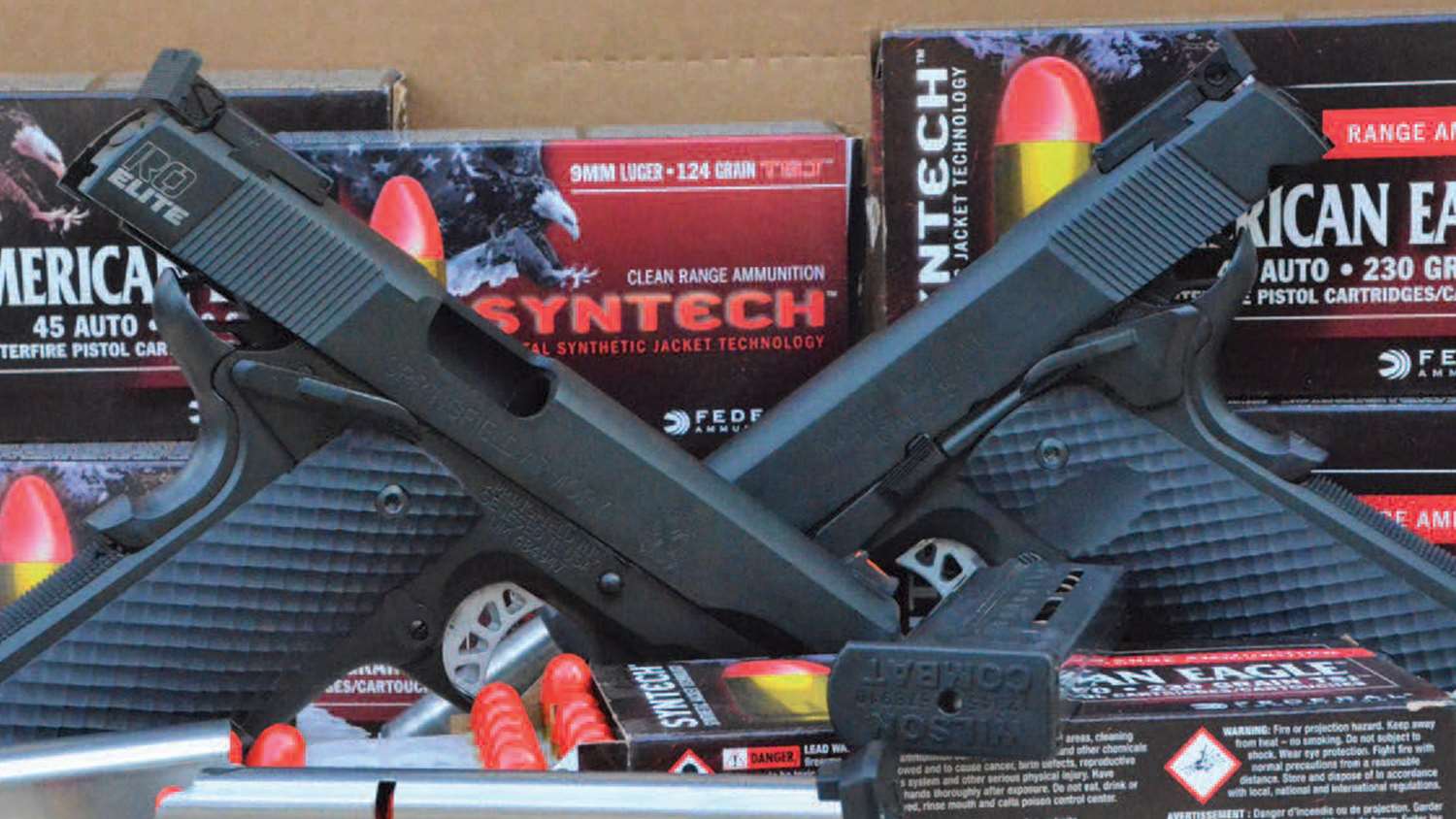
Has Springfield delivered a competition gun that is ready out of the box? The naysayers in the crowd would likely say no, There are two places the skeptic would cite evidence; the lack of magazine well and a trigger that requires pressing it rather than just looking at it. Is this a reasonable conclusion?
No serious competitor will leave the trigger of any stock gun alone, but the shooter would have to be well up the classification ladder before this trigger will make a noticeable difference with this gun. Facts, logic and reason are not what we are dealing with here, but the whims of competition shooters. Shooters are seldom satisfied with triggers, and competitors are even harder to satisfy. No trigger will ever be accepted by competitors until they plop down big money on a trigger job. Springfield has placed a very good trigger into the RO Elite. Many will say it is not good enough, and most of them cannot shoot up to the trigger that comes on the gun. It seems like a no-win situation from the company’s standpoint.
The second obvious place where this gun is not truly competition-ready is with a magazine well. Magazine wells are a good idea and they enhance match performance, especially so in the Single Stack division where reloads are going to make a huge difference in match performance. There is a great deal of personal preference when it comes to mag wells. One brand or model on the gun will turn some people on, and turn just as many people off. It is easy to see where offering many different types or models of magazine wells to try to satisfy the market would be a nightmare, and of course it would raise the price of the gun. Most USPSA shooters want a huge mag well to help enhance their performance. Such a magazine well would seem too “gamey”, and that would likely prohibit the concealed carry crowd from buying this model in nearly any case. Without the mag well, the RO Elite is a viable carry option even if that is not its intended purpose. The thing is, it would be an almost unwinnable situation trying to please the crowd on this point—so in the spirit of full disclosure, it seems the only two places where this gun is deemed lacking on being competition-ready out of the box are probably best left alone.
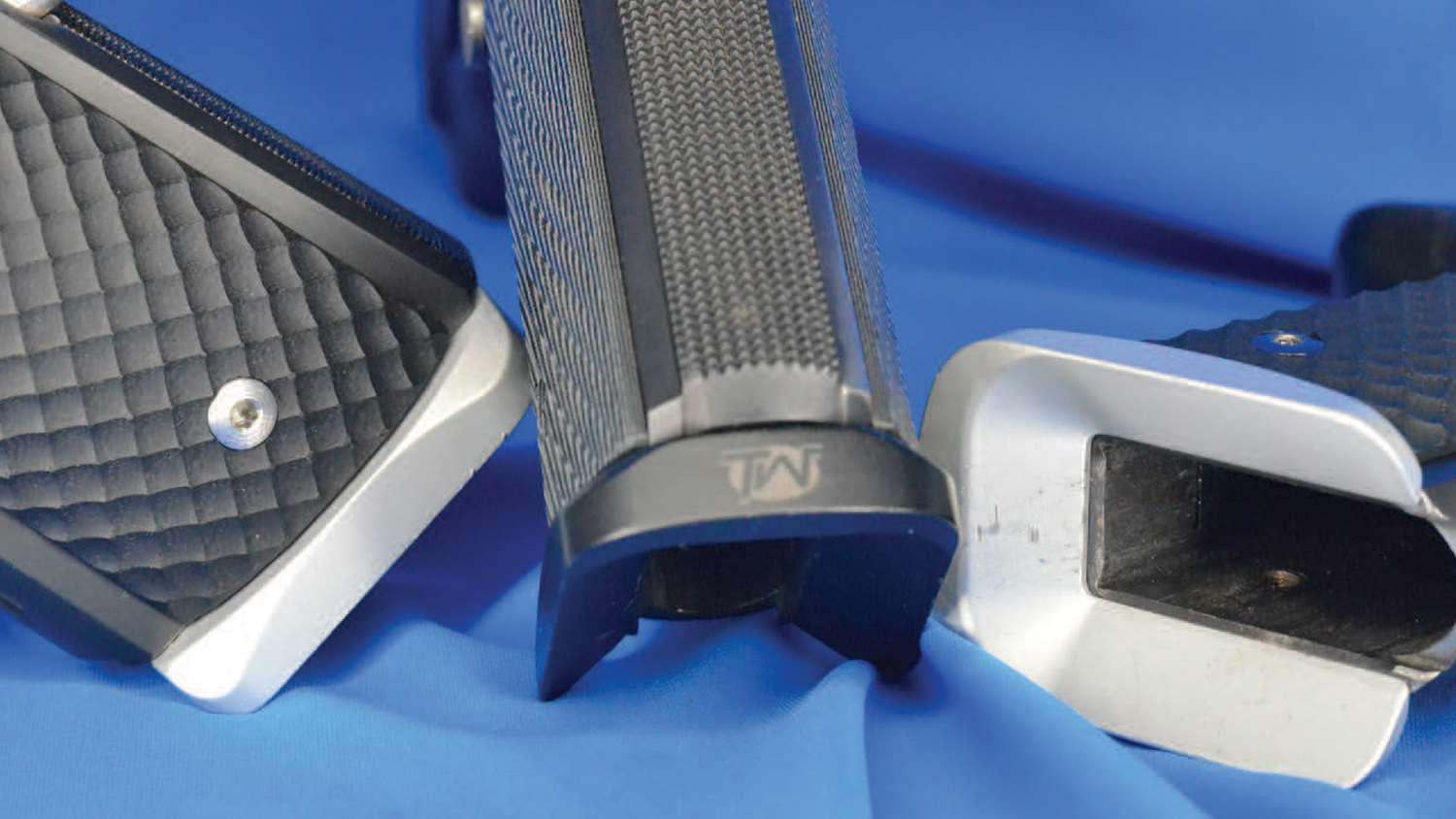
Just prior to the range session the two guns were outfitted with Tech Wear USA’s Tech Well magazine wells, specifically the TGO model. These easy-to-install mag wells do not require machine work, as they attach by the grips. The Tech Wells performed nicely and are a great addition to any single stack gun to aid with the reloading process.
Range Session
The range session was held at the Martinsville Sportsmen’s Conservation Club, with its variety of bays on an excellent well-kept range nestled in the scenic hills of south central Indiana. Jake arrived at the range first (I was still trying to find the range) and had everything set up by the time I arrived—then, while getting geared up, I realized I had left my holster at home (the plan was to use my normal holster so the only variable would be the gun). It’s a good thing Springfield had included a holster in the kit.
The exercises began with the chronograph. The third shot took out the front left wire of the chronograph (for the record, I was aiming at the back wire). Do you know how hard it is to hit those wires? After shooting over a chronograph since 2003, I finally managed to hit one, so it just shows that persistence pays off. A replacement was secured from the truck and we moved forward.
Following the Chrono debacle, we decided to start with a “near to far” array; the nearest target was 10 yards and the furthest 25 yards. Jake was shooting the RO Elite in .45 ACP and I shot the 9mm. Jake had shot the 9mm in several matches and was looking to get some time in with larger caliber. His runs on “near to far” were 4.64, 4.35 and 4.45 seconds, with 24, 35 and 31 points respectively, scoring major. Mine were 4.46, 4.27 and 4.95 seconds, with 34, 21 and 38 points, scoring minor. The accuracy seems pretty good with these guns.
The second formal range exercise was three targets at seven yards. We hoped it would be a bit of a slump buster and bring the point totals up. We started facing the targets, a simple matter of “grip it and rip it”. Jake’s times were 2.47, 2.47 and 2.34 seconds with 26, 25 and 10 points; my runs were 2.66, 2.51 and 2.26 seconds with point totals of 26, 26 and 24, proving that if we get close enough, we can hit what we are trying to hit. The pistols performed smoothly at these speeds.
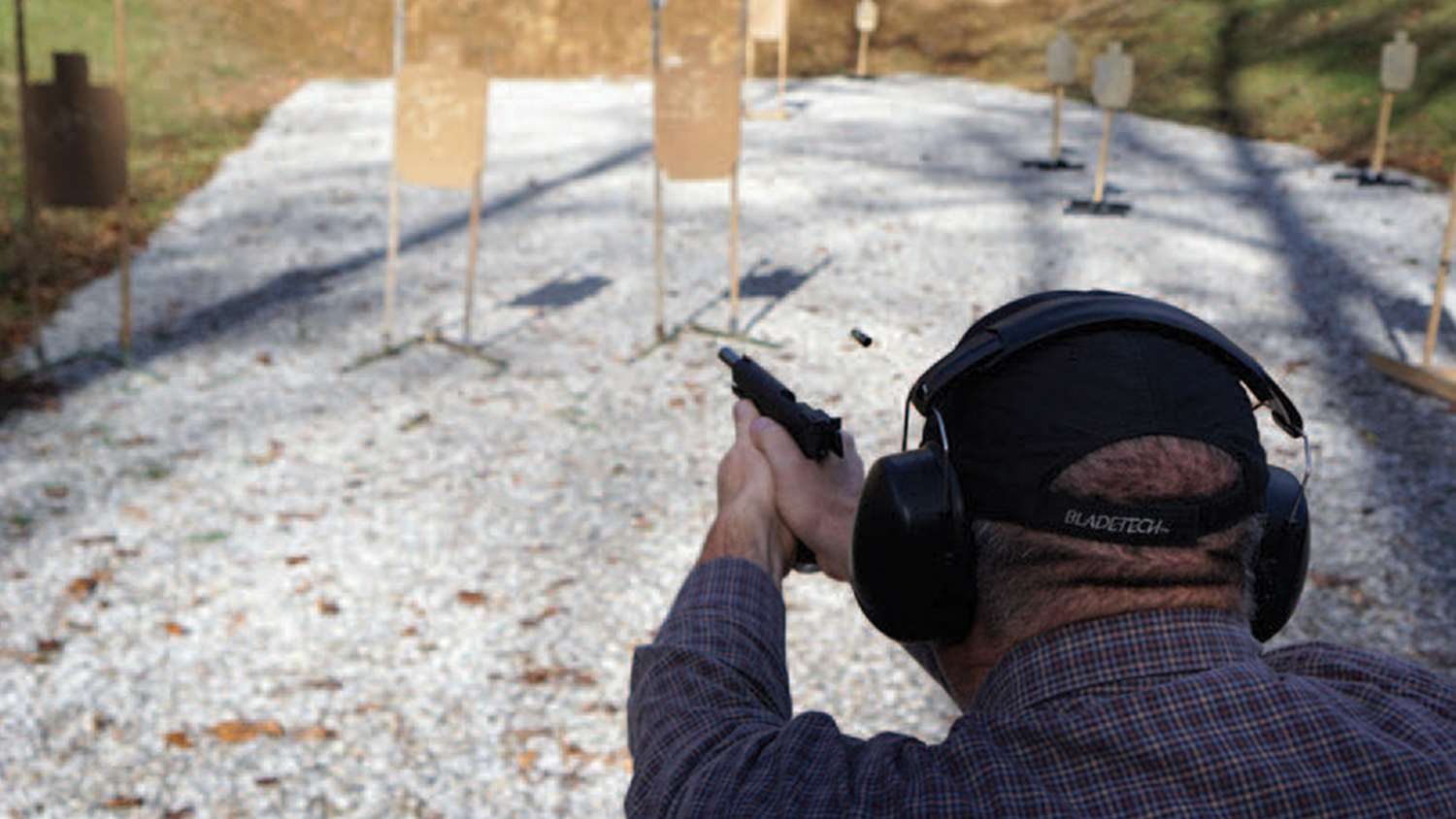
The third exercise was the ubiquitous “Bill Drill”, a single seven-yard target, with a “grip it and rip it” procedure to the shooting. Jake managed times of 2.26, 2.28 and 2.17 seconds with major points of 29, 30 and 27. My times were 2.53, 2.51 and 2.66 seconds minor points of 28, 25, and 28 for the three runs.
The final formal range exercise was El Prez. Jake started the party off with his three runs in 6.57, 6.47 and 6.76 seconds, with 54, 48, and 55 points respectively, solid runs that did not look clunky or forced. These runs could be duplicated over and over, and the gun was more than up to the challenge. My three runs were 6.72, 6.83 and 6.52 seconds with 54, 50, and 54 respectively. The performance on these three runs was not at full warp speed, but the points were solid and the runs were repeatable, even coming from the out-of- the-box holster which rode in an unfamiliar position on my belt. Once the gun was in hand, the shooting went very well and the gun performed fine.
We fired the pair of pistols informally following the above live fire drills and exercises. In that session we shot a couple of Jake’s single stack guns for a comparison. While using the same box of ammo in the RO Elite and Jake’s other gun there was one thing that stood out—as Jake pointed out, the felt recoil of the RO Elite was considerably less. Perhaps the different weight of the recoil spring was the difference, or perhaps it was something else; no matter the reason, the difference was dramatic, much larger than imagined or anticipated. Softer recoil is going to aid in splits for certain.
In these live fire exercises, the pair of guns performed very well. The guns functioned reliably; the only malfunctions were a few high primers, but that was an ammunition issue. Jake was able to shoot some very good groups with the gun at 15 to 20 yards from a standing and unsupported position.
These guns were very accurate and have many features that USPSA competitors are looking for right out of the box. There is no need to add an ambidextrous safety, better front sight or adjustable rear sight, which in the past has been the case when trying to get a gun competition-ready. A serious competitor is going do a trigger job, no matter what the original trigger is like, and add a magazine well.
The RO Elite is a modern member of the time-tested and competitor-approved 1911 family. Most folks are very familiar with the platform, and Springfield is a well-known name. The reputation of the gun and the company are enhanced by this model. The RO Elite is a purpose-built model that is well-suited for the purpose of burning down stages with fast and accurate fire. The RO Elite as it arrives could also serve as a carry gun. The competitor that made ready with this gun would be properly armed for the match and the ride home.
Article from the March/April 2018 issue of USPSA’s FrontSight magazine.














